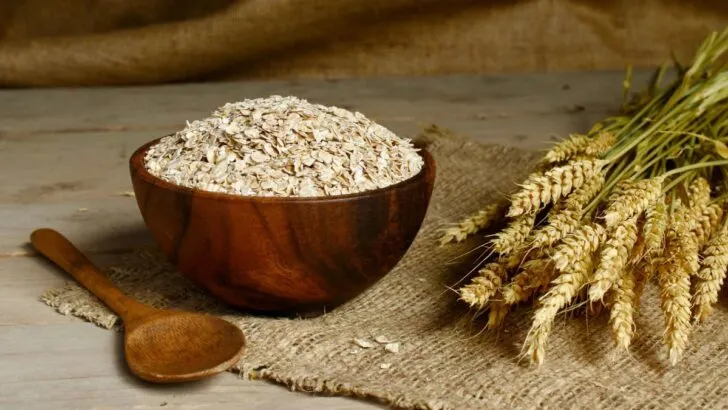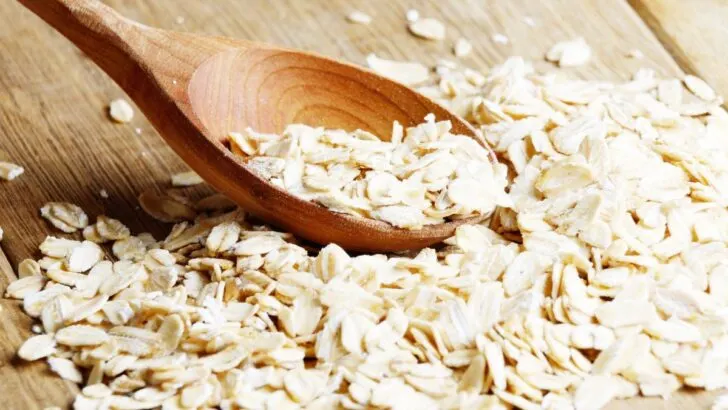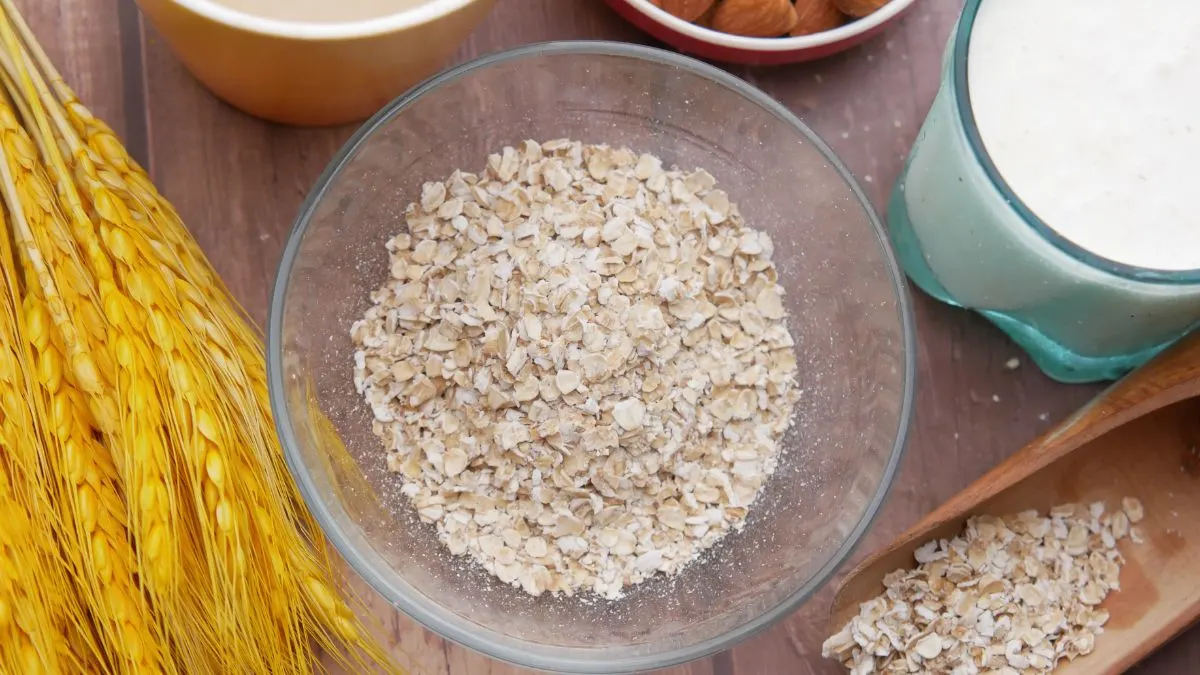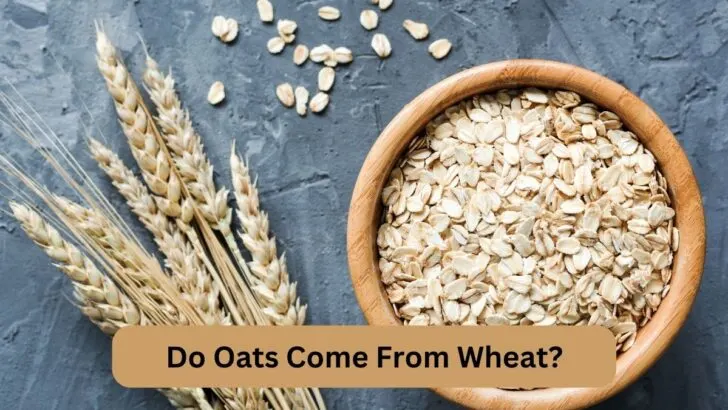Ever wondered where your hearty overnight oatmeals come from? Does it come from the same grain as wheat? Or are they even safe for celiac disease and gluten-intolerant patients?
Oats do not come from wheat, but instead comes from a plant called Avena sativa. This particular plant belongs to a family of cereal grains that are distantly related to the grass family. In their raw form, they are gluten-free grains, unlike wheat grains that contain the protein gluten.
This is just a snippet into the world of oats, so if you are intrigued, keep on reading to learn more about this popular breakfast grain that has been a family favorite ever since centuries!
What Exactly Are Oats?
Oats are obtained from the seed of a plant called Avena sativa, which is a type of grass grown especially for its cereal grain. This grass when fully grown looks very similar to other cereal grains such as wheat, rye, and barley.
As the plant grows and matures, during harvesting, the seeds are collected. This seed is sealed by an outer layer or shell.
This shell, called the oat fiber, is inedible and is removed from all the commercially sold oats during the early process of harvest.
It is beneath this shell that contains the actual seed, known as the oat groat. This groat includes the bran, germ, and endosperm.

How Are Oats Produced?
The Avena sativa plant is grown in big fields and grows into tall grass stalks much like some other cereal grains like wheat. Also much like wheat, Avena sativa grows feathery husks at the edge of its tall stalks.
When the plants mature for harvest, the husk remains intact. This husk is as light and thin as paper, and inside this inedible husk lies the individual yellowish or beige-colored grains which have pointy edges and almost look similar to rice.
Commercially, oat groats are hard to find and mostly, the oats found are grounded, crushed, rolled, or cut to acquire their appropriate characteristics.
Crushing and steel cutting turns the oats into small uneven chunks or even powder depending on the particular type of oat you choose. Both steel cut and crushed oats maintain their thick texture, which requires more time to cook.
On the other hand, rolled or quick oats are flattened into white oval discs. These are available in various thicknesses based on the particular type of oat with instant oats being the slimmest.
How Are Wheat And Oats Different From Each Other?
Wheat and oats both have quite similar grass and it is quite common for people to mistake them for being related. However, you would be quite surprised to know that they both don’t even belong to the same species. Despite wheat being a cereal grain grass and oat being a cereal grain in the grass family, they both have their differences.
Triticum Aestivum, a member of the Triticum family and sometimes known as common wheat, is the most popular strain of wheat. There are also various strains of wheat with everyone capable of building seeds quite similar to oats.
Oats don’t contain gluten as wheat does. The protein found in oats is called avenin, which is similar to wheat gluten but has a different structure of amino acids and is a relatively small protein in comparison.
Raw oats are recommended as a safe bet for those who have allergies or are sensitive to gluten.
Always make sure to read the packaging of the product before you buy if you suffer from severe allergies such as gluten intolerance, celiac disease, etc.
Naturally, oats are gluten-free but that doesn’t ensure that they are processed in a gluten-free factory due to the risk of cross-contamination. This happens due to the fact that most cereal grains require similar harvesting, collecting and packaging methods.
Oats are in contact with this gluten when being processed in the same factory. For this problem, oats should be processed in a separate factory and the buyer should make sure to buy their oats from a known trusted company.

What Are The Different Types Of Oats?
Commercially, oats are processed into numerous different varieties as oats are available in more than a dozen types.
Oats are treated in accordance with distinct specifications to provide a range of outcomes. Each type has its distinct period of cooking that opens up possibilities for their uses.
Below are some of the commonly used and available oats and their description:
- Steel-cut oats come from oat groats that have been cut into pinhead-sized chunks by large steel blades. Steel-cut oats are cooked for a longer time with a higher liquid ratio as compared to rolled oats which in return gives them a coarser texture. These oats take longer to digest and in return help you to stay full.
- Rolled oats are the most widely consumed type of oats. Rolled oats are oat groats that have been de-flaked and steamed and then rolled under large rollers. After that, they are also toasted a little so it hardens up. They then can be easily cooked into porridge without taking up much time.
- Quick oats are small rolled oats made from smaller chunks of whole grain flakes. These oats quickly absorb water and are even faster to cook than rolled oats, hence the name.
- Instant oats are made even quicker than quick oats. They are ground and rolled even finer so that they could be mixed with liquid to be consumed instantly.
- The raw oat germ, with the oat bran removed, is crushed into a fine powder to make oat flour. Batter and dough for baked items can be made using this flour.
All in all, a wide range of dishes can easily be made thanks to the diversity of oats and the wide selection of oat products!
What Health Benefits Do Oats Provide?
Oats without a doubt have maintained a good reputation for being the healthiest breakfast, and it’s no wonder why!
Here are some of the health benefits they provide:
- Oats are now being substituted in various meals instead of whole grains such as wheat and barley due to their gluten-free properties.
- For those wanting to replace rice, corn, and wheat, oats also act as a good addition to your lunches and dinner, which not only fulfills your stomach but also gives the added benefit of low-calorie intake.
- Furthermore, for those on a diet or a weight loss journey, oats can be an excellent choice as they are fiber-rich, which keeps you full for a longer period of time and helps reduce overeating and cravings.
- It is also quite common for doctors to add oats to their patients’ daily diets as oats have been shown to lower cholesterol, blood sugar surges after eating, and heart disease.
- Skin, hair, and beauty products all use oats or oat milk in their ingredients, as oats have been proven to have strengthening, nourishing, cleansing, exfoliating and moisturizing properties.
What Are The Nutritional Contents Of Oats?
Now that we have briefed the overall benefits of oats, let’s analyze their specific nutritional content in detail.
Oats are very nutritionally dense foods that are rich in fiber, healthy fat, and protein. These proteins and fats are an important source of energy, whereas as mentioned earlier, these fibers will fill you up for a long time and would help achieve your dietary goals due to their low-calorie intake.
Oats offer balance and improvement for your cholesterol levels, blood pressure, and digestion thanks to the soluble and insoluble fiber it contains.
They include a wide range of necessary vitamins and minerals that give your body the sustenance it needs for optimum health.
Oats and wheat both have almost identical nutritional categories although oats are more abundant in virtually all categories with the exception of calories, which are somewhat more in wheat.
However, the considerable increase in the quantity of fiber, good fats, and protein more than make up for that.
Both grains are strong suppliers of B vitamins, however, oats have a slight edge in terms of those that are difficult to obtain within your daily diet.

Are Oats Protein-Rich?
Oats are an excellent source of protein. It is due to this reason that they are so popular among vegans as they offer 17 grams of protein in a 100-gram serving.
Oats even beats wheat as it contains 4 grams less protein content in a 100-gram serving.
Oats have a particular kind of protein that is extremely similar to the amino acids in legumes. Despite not being classified as a complete protein, it provides an organic compound variety that is unmatched by any other grain!
Final Word on If Oats Come From Wheat
Overall, despite oats looking similar to wheat, they are two completely different grains. Oats are gluten-free and should be processed in a separate facility to keep them away from gluten contamination.
They are quite identical to wheat in terms of nutritional content but generally have an overall upper hand, making them an excellent healthy food source!


